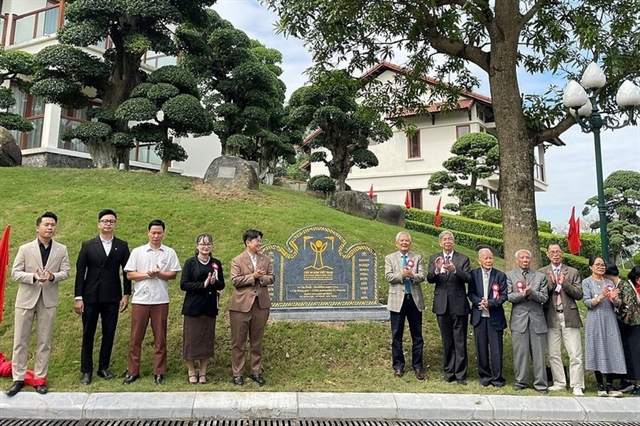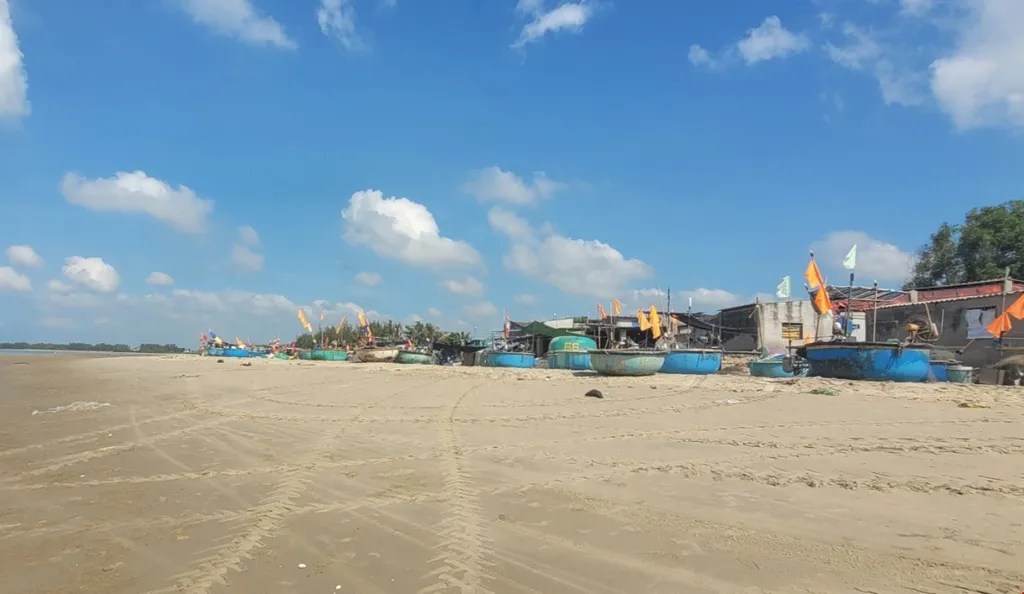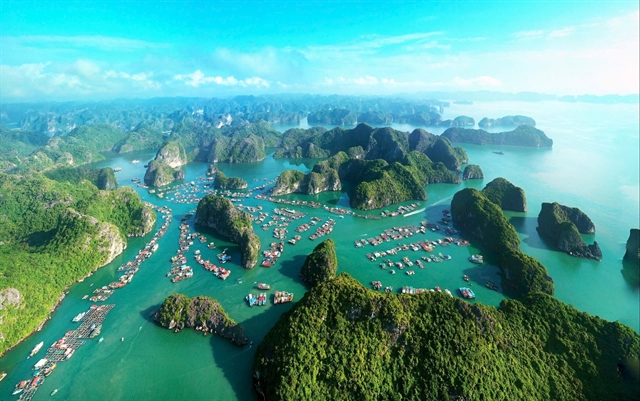 Environment
Environment

 |
| Ao Hải Hà, located in Long Hải Town, Long Điền District in southern Bà Rịa-Vũng Tàu Province, was previously an environmental pollution hotspot in the province. — VNA/VNS Photo |
BÀ RỊA-VŨNG TÀU — The Department of Natural Resources and Environment in southern Bà Rịa-Vũng Tàu Province has reported the successful control of six long-standing environmental pollution hotspots, which had seriously affected the livelihood and daily lives of local residents.
Ao Hải Hà, located in Long Hải Town in Long Điền District, is one example. There were 91 seafood processing and purchasing establishments operating, discharging waste water directly onto the beach. This caused a strong, foul odour in the area, and the waste was left uncollected, directly impacting the environment.
Over the past two years, the local authority has implemented a comprehensive environmental protection project in Long Điền District. Ao Hải Hà is one of the pollution points that the Government has actively addressed.
Nguyễn Thành Vân, Chairman of the People's Committee of Long Hải Town stated that immediately after COVID-19 was under control, the local government relocated these seafood processing establishments.
On a weekly and monthly basis, the local government has assigned a team of sanitation workers to clean up the beach.
The environmental pollution situation in this area has been addressed, with no wastewater from seafood processing activities discharged into the environment, and household waste has been collected.
In the future, Ao Hải Hà area will be developed as a tourism-service zone, he said.
A water reservoir spanning tens of hectares near the sluice No6 in Tân Hải Commune in Phú Mỹ Town was another hotspot for environmental pollution.
Adjacent to the water reservoir were seafood processing plants that operated and discharged wastewater directly into the reservoir. The water in the reservoir was consistently tinted purple, emitting a nasty odour.
During the rainy season, the sluice released water into the Chà Và River area in Long Sơn Commune in Vũng Tàu City, where hundreds of households raised fish in floating cages, causing massive deaths of fish worth hundreds of billions of đồng.
Fish farming households filed lawsuits against 14 wastewater-discharging businesses, and the companies that lost the lawsuits were ordered to compensate a total of VNĐ13 billion ($535,130).
The provincial People's Committee allocated tens of billions of đồng to renovate the water reservoir and relocate some polluting seafood processing plants in Lộc An Commune in Đất Đỏ District.
As a result, the water in this area had gradually recovered from pollution.
However, by March 2021, the pollution re-occurred, prompting thorough intervention from the relevant provincial authorities.
As of now, no businesses are operating in this area, and the water reservoir in front of the sluice has been returned to a clean and healthy state.
Representative of the provincial Centre for Management and Exploitation of Irrigation Works, which is responsible for the sluice No6, said for the past two years, the water reservoir area in Chu Hải Dike has not experienced environmental pollution and fish from floating cages in the Chà Và River have been no longer suffered from mass deaths whenever the sluice discharged water.
According to the provincial Department of Natural Resources and Environment, six areas in the province, namely Long Điền District, Châu Đức District, Đất Đỏ District, Xuyên Mộc District, Bà Rịa City, and Phú Mỹ Town, have managed to address hot spots of environmental pollution.
Currently, Vũng Tàu City is the only city that has not completed this task.
Localities have identified and compiled a list of 66 environmental pollution spots, including 36 related to business and livestock farming activities and 30 public pollution sources.
Local authorities have regularly conducted inspections and measures to gradually eliminate these spots.
Since May 2018, the province has relocated slaughterhouses and business facilities within Bà Rịa City to the Hoà Long and Long Phước industrial zones, and seafood processing facilities have been moved to the Lộc An and Bình Châu industrial zones.
The province has strengthened control over production facilities with significant waste water through community-based monitoring teams and self-management teams. The province has also required investments in automatic monitoring systems to track and supervise wastewater discharge, as well as strict control of emissions and dust from industrial production facilities through automatic monitoring systems.
Currently, 79 automatic air quality and dust monitoring stations have been invested in and transmit data to the resource and environment monitoring centre.
Đặng Sơn Hải, Deputy Director of the provincial department stated that in the coming time, the department would continue to coordinate with various departments and sectors to promptly propose measures for violators as per regulations.
The department has suggested residents to report unauthorised discharge into the environment to handle violations according to regulations. — VNS




